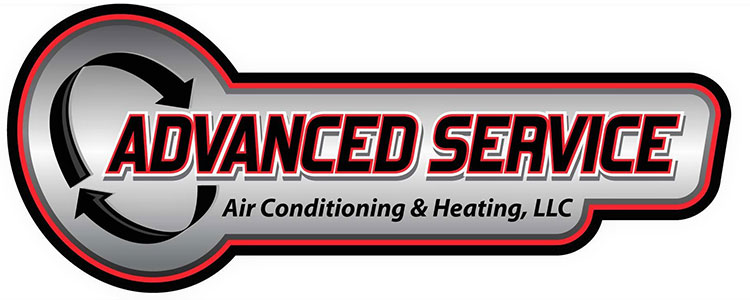
Ceiling fans are one of the most underrated ways to enhance comfort and lower energy costs. By boosting air circulation and assisting your HVAC system, ceiling fans and energy efficiency are truly a natural pairing. They offer a smart, eco-friendly way to stay cool while lessening strain on your AC—potentially sparing you from unnecessary air conditioning repair.
In this blog, the experts at Advanced Service AC & Heating discuss how ceiling fans can keep you cool while increasing your HVAC efficiency. We'll also provide some HVAC efficiency tips that take advantage of ceiling fans.
Comfort vs. Temperature: The Effect of the Wind-Chill Effect Indoors
Ceiling fans don’t actually change the room’s temperature—they make your home more comfortable by blowing air across your skin. This is referred to as the wind-chill effect, and it can make a room feel up to 4 degrees cooler without lowering the thermostat. That means you feel less hot and enjoy the benefits of indoor air circulation from your ceiling fan while minimizing air conditioner use—helping reduce your electric bill in summer.
The Best of Both: Why You Should Use Fans and Air Conditioning Together
There are several upsides to using ceiling fans and air conditioning together, especially on hotter days. By pairing both, you maximize HVAC efficiency and keep your home cooler with less work from your cooling system.
Top perks of using ceiling fans and AC together:
- Ceiling fans help lower HVAC load by distributing cool air more evenly around a room. Limiting HVAC stress is important, because it can help you avoid a breakdown that may result in premature AC or furnace installation.
- Using ceiling fans boosts the comfort level of your home by reducing uneven temperatures and increasing airflow.
- Running both ceiling fans and AC can cut energy consumption. If you have a home automation system, you can even modify your smart thermostat settings to set the temperature higher while your ceiling fan is running.
Clockwise vs. Counterclockwise Ceiling Fan Rotation: Which Direction Should a Fan Spin?
To make full use of your ceiling fans year-round, it’s important to set the blades to rotate in the right direction for the season. The direction affects how air circulates, which can either make you feel cooler or redistribute heat so you feel warmer.
When to rotate ceiling fans counterclockwise
On hot days, ceiling fans should turn counterclockwise at a higher speed. This creates a breeze that pushes cool air downward, amplifying the wind-chill effect and making you feel cooler.
When to spin ceiling fans clockwise
On cold days, set your fan to rotate clockwise on a gentle setting. This gently pulls cool air upward and pushes warm air near the ceiling down toward you, making the space feel cozier without adjusting your thermostat.
What Type of Ceiling Fan Is Best
Selecting the ideal ceiling fan depends on a few key factors, such as blade design, airflow rating and room dimensions. First, look for fans that have a good balance of ECFM airflow and blade pitch to provide efficient air movement in your space:
- ECFM refers to the amount of air a fan circulates—the cubic feet per minute, or CFM—per watt of electricity consumed. Fans with greater ECFM are the most energy efficient.
- Blade pitch is the tilt of the blades. A sharper blade pitch moves more air but can also stress the fan’s motor.
Also, consider room size when sizing a ceiling fan—a fan that’s too small won’t move as much air as you'd like, while one that’s too large may be overpowering for the room.
Boost Your HVAC Efficiency With the Team from Advanced Service AC & Heating
At Advanced Service AC & Heating, our HVAC specialists can help you enjoy year-round comfort while minimizing wear on your heating and cooling systems. From energy-saving ceiling fan tips and air conditioning installation to smart thermostats and furnace repair, we offer comprehensive services that fit your lifestyle. Set up your appointment by calling 301-371-8807 today.

